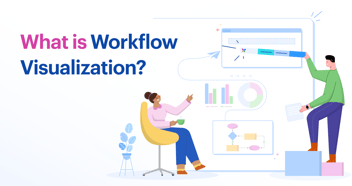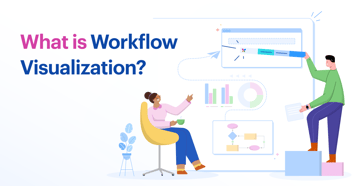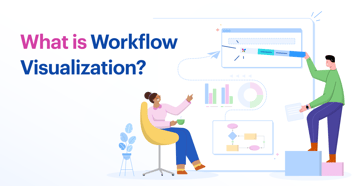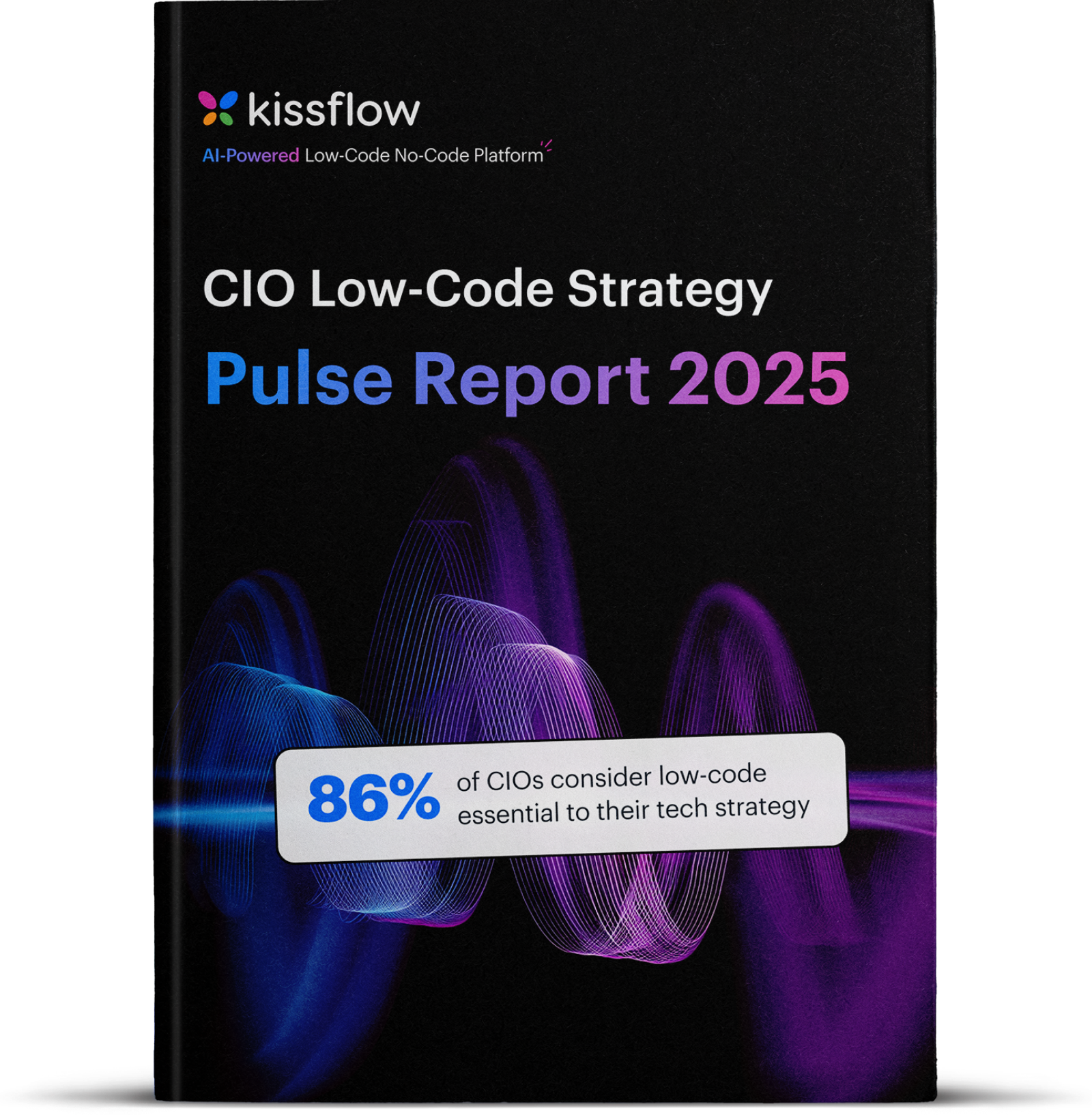
As we approach 2025, rapid technological advancements are transforming the healthcare industry. Innovations like Artificial Intelligence (AI), the Internet of Medical Things (IoMT), and low-code platforms are streamlining operations, improving patient outcomes, and reducing costs. At the same time, developments in telemedicine, blockchain, robotics, and augmented reality (AR) are revolutionizing patient care and healthcare management.
These technologies are essential for addressing growing healthcare demands and the challenges of aging populations. This blog highlights the critical healthcare IT trends for 2025 and explores how they are shaping the future of healthcare.
What’s trending in the healthcare industry?
- Artificial Intelligence (AI) and Machine Learning (ML) in Healthcare
- Internet of Medical Things (IoMT) and Connected Devices
- Telemedicine and Virtual Care
- Blockchain for Secure Healthcare Data Management
- Robotics and Automation in Healthcare
- Augmented Reality (AR) and Virtual Reality (VR) for Training and Treatment
Low-Code and No-Code App Development in Healthcare
What is Low-Code/No-Code in Healthcare?
Low-code and no-code platforms provide a visual approach to application development, enabling users to build software with minimal or no coding knowledge. In healthcare, where agility and rapid innovation are crucial, these platforms empower healthcare professionals, including those without technical expertise, to create custom applications that address their unique needs. By democratizing app development, healthcare organizations can tackle industry challenges such as digital transformation, regulatory compliance, and enhancing patient care without putting too much strain on their IT departments.
By allowing business users and clinicians to participate in the development process, healthcare organizations can build and deploy solutions quickly, efficiently, and at a lower cost. Whether it's automating administrative workflows, managing patient data, or integrating AI into diagnostic tools, low-code and no-code platforms make it possible to streamline operations and deliver more personalized care.
How Low-Code Platforms Are Speeding Up Innovation
The traditional development process in healthcare could be faster. It requires extensive coding, testing, and iteration, which delays innovation. Low-code platforms accelerate this by providing pre-built components, drag-and-drop interfaces, and automated workflows that simplify app creation. With low-code, healthcare organizations can create and deploy new apps in a fraction of the time it would take with conventional methods.
For example, a hospital can build and launch a custom solution in weeks instead of waiting months for a new patient management system. The speed and flexibility offered by low-code platforms enable healthcare providers to rapidly adapt to changing regulatory requirements, integrate new technologies like AI or IoT, and improve patient engagement and operational efficiency.
Low-code platforms also support continuous improvement, allowing healthcare organizations to iterate on their solutions quickly and respond to feedback from patients and staff without needing a complete redevelopment cycle. This agility is critical in a healthcare environment where patient needs and technological advances evolve rapidly.
Enhance lab efficiencies using the Lab Management App.
The Benefits of Low-Code Development for Healthcare Providers
1. Faster Time to Market: Low-code platforms drastically reduce the time it takes to develop and deploy applications, helping healthcare providers respond more quickly to patient data management, regulatory compliance, and operational bottlenecks.
2. Cost-Effective Development: Low-code platforms demand fewer resources than traditional methods, enabling healthcare providers to allocate budgets more efficiently. They can invest in better equipment or advanced care options rather than overspending on IT development.
3. Empowering Citizen Developers: Healthcare staff, such as department managers or clinical leaders, can use no-code platforms to create tools tailored to their workflows and patient needs without waiting for IT departments, empowering professionals to implement immediate solutions for their specific challenges.
4. Improved Patient Care: Low-code platforms enable healthcare providers to build apps that enhance patient experiences, such as telemedicine portals, real-time symptom tracking, or personalized care management tools. These apps contribute to more effective care, improving patient outcomes.
5. Enhanced Regulatory Compliance: With built-in governance tools, low-code platforms help ensure that applications meet industry standards and regulations like HIPAA, protecting patient data and ensuring compliance without requiring additional development time or resources.
6. Integration with Existing Systems: Low-code platforms easily integrate with legacy systems like Electronic Health Records (EHR) and other healthcare infrastructure, ensuring seamless data exchange and enhancing the overall functionality of existing tools without needing to replace them.
Examples of Low-Code Healthcare Applications
1. Patient Management Portals: Hospitals and clinics can quickly create custom patient portals that allow patients to schedule appointments, view medical records, and communicate with healthcare providers. These portals can be tailored to the specific needs of each healthcare organization and integrate with their EHR systems.
Reduce operational costs with the Doctor Management App.
2. Telemedicine Applications: Low-code platforms make it easy to build telemedicine apps that provide virtual consultations, symptom checking, and follow-up care. Healthcare providers can offer better access to care without investing in large-scale software projects, and they can continuously update these apps based on patient feedback.
3. Regulatory Compliance Tools: Healthcare organizations must comply with strict regulations. Low-code platforms enable rapid development of compliance tracking tools that automate data collection, reporting, and auditing, ensuring healthcare providers meet HIPAA and other regulatory standards.
4. Appointment and Workflow Automation: Clinics can build scheduling systems that automate appointment bookings, staff schedules, and resource management. Low-code platforms also support workflow automation, reducing administrative burdens and allowing healthcare professionals to focus more on patient care.
5. Custom AI Diagnostic Tools: Healthcare organizations can integrate AI and machine learning models into custom diagnostic tools with low-code platforms. These tools can help with disease prediction, image analysis, or personalized treatment plans, enhancing the accuracy and speed of diagnoses.
6. Clinical Trial Management: Low-code platforms can help develop applications to manage clinical trials, including participant enrollment, data collection, and monitoring outcomes. These apps simplify the complex processes involved in clinical trials, allowing for better oversight and faster decision-making.
Citizen Development in Healthcare
How Citizen Development Applies to Healthcare Professionals
Citizen development enables non-IT professionals to build and customize applications using low-code or no-code platforms. In the healthcare industry, this concept empowers healthcare professionals like doctors, nurses, and administrative staff to create tailored applications that directly meet their specific needs without waiting for IT intervention. Standard software often fails to meet healthcare workers' particular needs. Citizen development lets them create custom tools to streamline workflows and enhance patient care.
For example, a nurse might build an app to track post-surgery recovery, or an administrator could streamline appointment management. Citizen development enables healthcare professionals to create solutions in real-time, solving issues they encounter in their day-to-day tasks and responding to the evolving needs of patients and staff.
Empowering Healthcare Workers Through Citizen Development
Healthcare workers often need help with bottlenecks due to reliance on IT for application development. Citizen development changes the game by putting power directly in the hands of healthcare professionals. With intuitive, no-code platforms, they can build applications to automate tasks, manage patient information, or improve operational efficiency. The benefits of this empowerment are vast:
1. Increased Autonomy: Healthcare professionals no longer rely solely on IT to create applications or solutions for daily operations. They can design, test, and implement apps that meet their specific needs, cutting down the time required for approvals or IT backlogs.
2. Faster Problem Solving: Doctors and nurses can create tools that solve immediate issues, like monitoring patient vitals more effectively or managing medication schedules, without going through lengthy development processes.
3. Enhanced Patient Care: Healthcare workers can offer more personalized care by creating patient-centered applications. For instance, they could design patient engagement tools that help individuals track their treatment plans and schedule follow-ups, improving adherence to medical advice.
4. Reduced Burnout: Automating routine administrative tasks, such as appointment scheduling and patient record updates, significantly reduces the burden on healthcare workers, allowing them to focus more on patient care and lowering the risk of burnout.
Use Cases: Citizen Development in Action
1. Customized Patient Intake Forms: Hospitals and clinics often use generic patient intake forms, which may not suit every department’s needs. Citizen development allows healthcare workers to create tailored forms that capture the data needed for specific cases, improving the quality of care and patient experience.
2. Telehealth Appointment Scheduling: With the rise of telemedicine, efficient scheduling systems are critical. A hospital administrator could use a no-code platform to design a scheduling app that integrates telehealth appointments with in-person visits, ensuring smoother operation and resource allocation.
3. Patient Care Tracking: Nurses could build a mobile app that tracks patients’ vital signs and progress throughout their hospital stay. This real-time data monitoring could trigger alerts for abnormal readings, ensuring timely interventions and improving outcomes.
4. Pharmacy Workflow Automation: Pharmacists could use citizen development to create apps that manage medication inventory, automate prescription renewals, and track medication dispensation. Doing so would reduce errors, improve efficiency, and ensure compliance with regulatory standards.
Simplify hospital workflows with the Patient Management App.
5. Clinical Trial Management: Healthcare researchers could build apps to manage participant enrollment, monitor progress, and analyze results. With these custom applications, citizen developers can create tailored workflows to meet the unique needs of each trial, reducing administrative load and improving data accuracy.
The Role of IT in Supporting Citizen Developers
While citizen development puts power into the hands of healthcare professionals, IT departments still play a crucial role in ensuring the success and governance of these initiatives. IT teams provide the technical oversight, security measures, and integration capabilities needed to ensure that applications developed by non-technical users meet industry standards and compliance regulations. Here’s how IT supports citizen development:
1. Platform Governance: IT departments establish guidelines for using low-code platforms, ensuring that applications built by healthcare workers comply with regulatory requirements like HIPAA. They create a secure environment where citizen developers can work without risking data breaches or compliance issues.
2. Support and Training: IT provides training on the low-code or no-code platforms, helping healthcare workers understand how to build apps effectively while adhering to security and data privacy policies. They also offer ongoing technical support to troubleshoot issues and guide improvements.
3. System Integration: Healthcare organizations rely on complex, interconnected systems such as Electronic Health Records (EHRs). IT teams ensure that the apps developed by citizen developers integrate smoothly with existing infrastructure, maintaining a cohesive digital ecosystem that enhances workflow efficiency.
4. Security and Compliance: IT is critical in ensuring that all applications meet the necessary security protocols. By monitoring apps created through citizen development, IT ensures that sensitive patient information remains protected and that the healthcare organization complies with industry regulations.
5. Collaboration with Healthcare Teams: IT departments work closely with healthcare professionals to understand their needs, provide feedback on their application development, and help refine the processes. This collaborative effort ensures that citizen developers can create practical and secure apps.
Artificial Intelligence (AI) in Healthcare
AI transforms healthcare by processing vast amounts of data, identifying patterns, and making predictions that improve patient outcomes. Projections show the healthcare AI market will surpass $27.12 billion by 2025, highlighting its increasing role in patient care and healthcare operations.
Personalized Treatment with AI and Low-Code Platforms
In healthcare, using AI to develop personalized treatment plans revolutionizes patient care. However, AI-driven insights are only practical when healthcare providers can implement them quickly and at scale. Low-code platforms, like Kissflow, bridge the gap by enabling citizen developers to create custom applications that integrate AI-driven recommendations with existing workflows. For healthcare CIOs, this means faster, more tailored patient care solutions without the bottleneck of waiting on traditional IT development cycles.
Enhancing Diagnostic Accuracy Through AI and Custom Healthcare Apps
AI’s ability to analyze vast datasets and improve diagnostic accuracy is essential in medical imaging. Integrating AI insights into healthcare systems demands flexible and agile solutions. Low-code platforms enable healthcare organizations to build diagnostic tools seamlessly, incorporating AI algorithms and helping physicians access actionable insights faster. This approach reduces errors and leads to earlier interventions, all without the need to build complex applications from scratch.
Telemedicine and AI-Driven Patient Engagement
Telemedicine has grown in importance, and AI plays a significant role in this space by automating routine tasks like appointment scheduling and symptom triaging. A low-code platform enables healthcare providers to quickly develop AI-powered telemedicine apps that enhance patient engagement and streamline post-consultation care. CIOs can empower their teams to build these tools in-house without needing deep technical expertise, keeping innovation moving at the speed of healthcare.
Internet of Medical Things (IoMT) and Connected Devices
Overview of IoMT and Its Significance in the Healthcare Industry
The Internet of Medical Things (IoMT) is a network of connected devices, sensors, and systems that collect, analyze, and transmit health data in real-time. These devices range from wearables like smartwatches and fitness trackers to more advanced medical equipment, such as implantable glucose monitors and remote patient monitoring tools. The IoMT is reshaping the healthcare landscape by enabling more proactive, patient-centered care, reducing the burden on healthcare systems, and improving outcomes for patients with chronic conditions.
The IoMT market is snowballing and will likely reach $29 billion by 2026, with more than 30 billion connected devices expected to be in use by then. Advancements in sensor technology, cloud computing, and wireless communication fuel this explosive growth, enabling healthcare providers to continuously monitor patient health and make more informed decisions using real-time data.
The significance of IoMT in healthcare is profound. It provides a seamless link between patients, providers, and the systems that support them. This technology enables early detection of health issues, reduces hospital readmissions, and supports the shift from reactive care to proactive and preventative healthcare models. Moreover, IoMT fosters value-based care, where the focus shifts from volume (the number of services provided) to outcomes (the quality of patient care and health improvements).
Wearables and Remote Patient Monitoring
One key area where IoMT has significantly impacted is wearable technology and remote patient monitoring (RPM). Wearable devices like smartwatches, fitness trackers, and heart rate monitors collect real-time data on various health metrics, such as heart rate, activity levels, sleep patterns, and oxygen saturation. This data is transmitted to healthcare providers or mobile applications, allowing patients and doctors to monitor their health continuously.
For patients with chronic conditions such as diabetes, hypertension, or heart disease, wearables provide a non-invasive way to track important health indicators. For instance, continuous glucose monitors (CGMs) enable diabetic patients to closely monitor their blood sugar levels throughout the day without frequent blood tests. Similarly, blood pressure monitors can track fluctuations over time, helping physicians adjust treatment plans more effectively.
Remote patient monitoring takes this further by using IoMT devices to collect and transmit patient data from the comfort of their homes. Through this method, healthcare providers can monitor high-risk patients or those with chronic conditions more closely without requiring frequent hospital visits. It also alleviates the strain on healthcare systems, making more resources available for acute care patients.
Examples of IoMT devices used in remote monitoring include:
- Cardiac monitors: Track heart rhythms and detect arrhythmias or other cardiovascular issues.
- Respiratory monitors: Measure lung function and oxygen saturation in patients with respiratory conditions like asthma or COPD.
- Wearable ECG monitors: Provide continuous heart rate monitoring, identifying abnormal rhythms or signs of heart failure.
These devices transmit data to healthcare professionals, enabling them to intervene if they detect alarming trends, such as irregular heartbeats, low oxygen levels, or rising blood sugar.
How IoMT is Enhancing Patient Care
The IoMT revolution enhances patient care by enabling real-time monitoring, improving patient engagement, and creating opportunities for more personalized treatment plans.
1. Real-Time Monitoring Real-time data collection is one of the most significant advantages of IoMT. By continuously gathering patient data, healthcare providers can monitor vital signs and detect early warning signs of deterioration before symptoms escalate. For example, a patient with heart disease might wear a connected ECG monitor that tracks their heart rhythms 24/7. If the device detects an abnormal rhythm, it can alert the patient and their doctor, allowing immediate intervention before the issue becomes life-threatening.
This real-time monitoring is crucial for managing chronic diseases, where consistent oversight can significantly reduce the risk of complications and hospitalizations. For instance, patients with chronic obstructive pulmonary disease (COPD) can use connected respiratory monitors to track their breathing patterns. Should their oxygen levels drop or they experience breathing difficulties, the system can alert the patient and their care team, facilitating timely treatment.
2. Enhanced Patient Engagement IoMT devices also enhance patient engagement by giving patients greater visibility into their health metrics. When patients access real-time data about their physical condition, they become more proactive about managing their health. This increased awareness encourages better adherence to treatment plans, such as taking prescribed medications or following a recommended diet and exercise regimen.
Mobile apps linked to wearables and IoMT devices often provide patients with reminders and personalized insights. For example, an app connected to a fitness tracker might encourage patients to meet their daily activity goals by sending alerts or offering rewards. Similarly, an IoMT-based app can track a diabetic patient’s glucose levels and provide tailored advice on managing their condition based on real-time data.
IoMT devices collect data and share it with healthcare providers, enabling them to adjust treatment plans dynamically. This continuous feedback loop fosters collaboration between patient and provider, empowering patients to manage their health actively.
3. Preventative and Personalized Care By leveraging the vast amounts of data generated by IoMT devices, healthcare providers can offer more personalized care tailored to individual patients. For example, instead of recommending a general treatment plan for all heart disease patients, a doctor can use data from wearable devices to create a treatment plan specifically for a patient’s unique heart rhythm patterns, activity levels, and lifestyle.
In addition, the early detection capabilities of IoMT mean that healthcare professionals can focus more on preventative care. Rather than treating a disease after it progresses, real-time monitoring allows for detecting early symptoms, enabling interventions that can prevent the condition from worsening.
Furthermore, IoMT contributes to remote care, where patients can manage conditions like diabetes or hypertension from their homes, reducing the need for frequent hospital visits and improving overall quality of life. Healthcare providers can adjust treatment plans based on real-time data, minimizing the need for reactive, in-person interventions.
Telemedicine and Virtual Care: The Future of Healthcare Delivery
The Growth of Telehealth in 2025
By 2025, healthcare providers will make telehealth a central part of care delivery. The rapid rise of virtual care, which began during the COVID-19 pandemic, continues to reshape how patients and providers interact. Nearly 70% of patients will choose providers offering virtual care alongside traditional services, highlighting the demand for accessibility, convenience, and personalized care.
- Routine Care: Virtual visits are perfect for routine check-ups, follow-ups, and chronic condition management. Patients can quickly meet with their healthcare providers without the hassle of traveling or taking time off work.
- Chronic Disease Management: Remote monitoring enables patients with chronic conditions to check in with their healthcare team more frequently, resulting in improved outcomes and more proactive care.
- Mental Health Services: Virtual therapy and counseling are expanding rapidly, providing easier access to mental health support and breaking down barriers to treatment, making mental healthcare more accessible and accepted.
- Post-Operative Care: After surgery, patients can consult with their doctors remotely instead of returning to the hospital for check-ups, ensuring consistent care and monitoring from home.
5G-Enabled Telemedicine: A Game-Changer for Virtual Care
5G technology will transform telemedicine by overcoming previous limitations like network instability and slow data speeds. Here’s how 5G enhances telehealth services:
1. Enhanced Video Quality
5G will support high-quality video consultations, making it easier for doctors to conduct detailed virtual exams. Clear, uninterrupted video calls will ensure more accurate diagnoses, especially in specialties where visual assessments are essential, like dermatology.
2. Real-Time Data Sharing
5G will enable the immediate transmission of large medical files, such as MRIs and CT scans. Healthcare providers can quickly review diagnostic images and collaborate with specialists in real-time, which is particularly important for emergency care and situations requiring fast decision-making.
3. Remote Surgeries and Procedures
With 5G, surgeons can perform complex remote procedures using robotic systems. The ultra-low latency of 5G will allow precise, real-time control during surgeries, enabling healthcare providers to offer surgical care from miles away.
4. Wearable Health Devices and Continuous Monitoring
5G technology will make wearable health devices more effective, allowing continuous monitoring of vital signs like heart rate and blood pressure. This data can be shared with healthcare providers instantly, enabling them to adjust treatments and detect potential issues before they become serious.
5. Expanding Telemedicine to Rural Areas
5G will improve telemedicine accessibility in rural or underserved areas where reliable internet connections are often lacking. It will bridge the gap in healthcare services and enable patients in remote regions to consult with specialists and receive timely care.
Blockchain for Secure Healthcare Data Management
As healthcare digitizes, managing and securing vast amounts of sensitive patient data becomes critical. Blockchain technology emerges as a powerful solution to address these concerns. By 2025, blockchain will ensure healthcare data's integrity, security, and transparency. Its decentralized nature enhances security and efficiency in healthcare information management, reducing the risk of data breaches and unauthorized access.
Blockchain and Patient Data Security
Blockchain technology significantly enhances data security in healthcare. Traditional healthcare systems store patient data in centralized databases, making it more vulnerable to cyberattacks and unauthorized access. Blockchain decentralizes data storage, distributing information across a network of computers and creating a secure, immutable ledger that no single entity controls.
Here’s how blockchain improves patient data security:
- Immutability: Once data is entered into a blockchain, it cannot be altered or deleted. This feature ensures that patient records remain accurate and unchangeable, essential for maintaining the integrity of medical histories and ensuring trust between healthcare providers and patients.
- Transparency and Access Control: Blockchain gives patients more control over access to their healthcare data. With smart contracts, patients can grant or revoke access to their medical records in real-time, ensuring that only authorized individuals, such as healthcare providers or insurers, can view the data. This approach reduces the risk of unauthorized access and ensures transparency.
- Reduced Risk of Data Breaches: Because blockchain is decentralized, there is no single point of failure that hackers can target. Even if a breach occurs on one part of the system, the distributed nature of the ledger makes it extremely difficult for attackers to compromise the entire network, significantly reducing the likelihood of large-scale data breaches, which have become increasingly common in the healthcare industry.
Applications of Blockchain in Healthcare
Beyond data security, blockchain technology offers a variety of applications in healthcare, ranging from improving clinical data sharing to enhancing the transparency of the healthcare supply chain.
1. Interoperability and Data Sharing
One of the long-standing issues in healthcare is the inability of different systems to share patient data efficiently. Blockchain can provide a universal data-sharing framework across healthcare providers, insurers, and other stakeholders, enabling seamless access to patient records. Using blockchain, healthcare organizations can ensure that patient data is consistently up-to-date and accessible to authorized parties, regardless of their location or the systems they use, particularly valuable for:
- Care coordination: Blockchain can help integrate data across different healthcare providers, improving care coordination for patients who see multiple specialists.
- Emergency care: In emergencies, blockchain allows quick and secure access to a patient’s medical history, which can be crucial in delivering life-saving treatment.
2. Supply Chain Transparency
Healthcare supply chains are applying blockchain to ensure the authenticity and traceability of medications and medical devices. Counterfeit drugs pose a significant issue in the pharmaceutical industry, leading to ineffective treatments and potential harm to patients. Blockchain technology addresses this problem by creating an immutable record of the production, shipping, and delivery of medications and medical devices.
- Traceability: Blockchain enables manufacturers, distributors, and healthcare providers to track every step of a product’s journey from production to the patient. It ensures that drugs and medical devices are authentic, not counterfeit, and properly stored and handled.
- Accountability: With blockchain, healthcare organizations can hold suppliers accountable by providing a transparent and verifiable record of transactions. It enhances the prevention of fraud and improves the overall integrity of the healthcare supply chain.
3. Clinical Trials and Research
Blockchain can transform clinical trials by improving the transparency and trustworthiness of research data. Clinical trials often face issues related to data tampering, lack of transparency, and delayed reporting. Blockchain can address these problems by creating a tamper-proof ledger that records every step of the clinical trial process, from participant consent to data collection and analysis.
- Data Integrity: Since blockchain is immutable, it ensures that no one can alter data from clinical trials after recording it. It boosts the credibility of the results and encourages greater collaboration between research institutions.
- Participant Privacy: Blockchain can anonymize patient data in clinical trials, ensuring that participant identities remain confidential while allowing researchers to access critical health information.
4. Billing and Claims Management
Managing healthcare claims and billing is often complex, involving multiple intermediaries and creating opportunities for fraud or errors. Blockchain can streamline claims processing by automating the verification of claims through intelligent contracts. These contracts can verify the validity of claims in real-time, ensuring that patients and insurers are on the same page without needing third-party verification.
- Fraud Prevention: Blockchain’s transparency helps reduce fraud by creating an immutable record of all transactions, making it easier to audit claims and identify discrepancies.
- Efficiency: Using blockchain for claims management, healthcare providers can reduce administrative overhead and ensure faster payment for services rendered.
The Future of Blockchain in Healthcare
As blockchain technology continues to evolve, its role in healthcare will expand. In the future, we expect blockchain to be integrated with other emerging technologies, such as artificial intelligence (AI) and the Internet of Medical Things (IoMT), to enhance patient care and healthcare management further.
- Blockchain and AI: AI algorithms could analyze the vast amounts of data stored on blockchain networks, providing healthcare providers valuable insights into patient health and treatment outcomes.
- Blockchain and IoMT: Integrating blockchain with connected medical devices (IoMT) could enable more secure and efficient management of the data collected by these devices, ensuring that patient health information remains private and tamper-proof.
Robotics and Automation in Healthcare
Robotics and automation transform healthcare delivery, from surgical procedures to administrative tasks. Experts expect the market for surgical robots alone to exceed $24 billion by 2025, driven by the growing demand for more precise, efficient, and minimally invasive treatments. Automation in healthcare operations also streamlines workflows, reduces costs, and enhances patient care. Together, robotics and automation are revolutionizing healthcare's clinical and operational aspects.
Robotic-Assisted Surgeries
Robotic-assisted surgeries have gained traction in recent years, allowing healthcare providers to perform complex procedures with greater precision and control. These systems, such as the da Vinci Surgical System, enable surgeons to operate with enhanced talent, vision, and accuracy, often surpassing the capabilities of traditional surgical methods.
Key benefits of robotic-assisted surgeries include:
1. Minimally Invasive Procedures Surgeons commonly use robotic systems for minimally invasive surgeries, where they prioritize small incisions and precision. These procedures cover orthopedics, urology, gynecology, and cardiovascular surgery. In these fields, robotic systems provide surgeons with high-definition, 3D views and magnified control over surgical instruments, resulting in more accurate operations.
2. Improved Precision Robotics offer unparalleled precision during surgeries, reducing the risk of human error. For instance, in orthopedic surgeries like joint replacements, robotic systems assist surgeons in making precise bone cuts and placing implants with millimeter accuracy. This precision minimizes complications, such as infections or misaligned implants, and improves patient outcomes.
3. Faster Recovery Times One of the most significant advantages of robotic-assisted surgeries is the reduced recovery time for patients. Minimally invasive techniques often result in smaller incisions, less bleeding, and reduced trauma to surrounding tissues. As a result, patients experience faster recovery times, less post-operative pain, and shorter hospital stays than traditional open surgeries.
4. Fewer Complications Robotic systems reduce the likelihood of complications by providing surgeons with a more detailed view of the surgical site and improved control over the instruments. In cardiovascular and urological surgeries, where delicate tissues and structures are involved, the enhanced precision of robotics helps avoid unintentional damage to nearby organs or tissues.
5. Widened Access to Complex Procedures Robotics has expanded the scope of surgical care, allowing surgeons to perform procedures once considered too risky or difficult with greater confidence and success. Thanks to the availability of robotic systems, patients who might not have been candidates for certain surgeries before now have new opportunities.
Automation in Healthcare Operations
Automation is not limited to the operating room. Healthcare organizations increasingly turn to automation to streamline their administrative operations, allowing them to focus more on patient care and less on time-consuming tasks. By automating billing, claims management, and scheduling, healthcare providers improve efficiency, reduce costs, and minimize human errors.
Critical areas of automation in healthcare operations include:
1. Billing and Claims Processing Healthcare organizations are adopting automated billing and claims processing systems to handle the complexities of healthcare payments. These systems help reduce manual work, decrease errors, and speed up the revenue cycle by automating insurance verification, coding, and claims submissions. The result is faster reimbursements and fewer denied claims, directly improving healthcare institutions' financial health.
2. Patient Scheduling Automated scheduling tools are improving the patient experience by allowing individuals to book, cancel, or reschedule appointments online or via mobile apps without needing to speak with administrative staff. These systems reduce administrative overhead and optimize healthcare providers' scheduling, minimizing schedule gaps and reducing patient wait times.
For healthcare providers, automated scheduling can also help ensure that resources—such as operating rooms, specialists, or diagnostic equipment—are allocated efficiently, improving overall facility utilization.
3. Staff Scheduling and Workforce Management Managing the schedules of healthcare professionals is a complex task that requires consideration of individual availability, staffing needs, and legal work-hour restrictions. Automated systems can generate optimized staff schedules, ensuring that hospitals and clinics maintain adequate coverage while minimizing overtime costs and staff burnout.
4. Supply Chain Management Automation is also making healthcare supply chains more efficient. Automated inventory management systems track medical supplies in real-time, ensuring that hospitals and clinics have the necessary materials without overstocking or experiencing shortages. These systems help prevent disruptions in care by automating the reordering process when supplies run low.
Electronic Health Records (EHR) Automation EHR automation reduces the burden of manual data entry for healthcare providers by automatically capturing and storing patient information. These systems improve data accuracy and make accessing and updating patient records easier, leading to better care coordination across departments and specialties. EHR automation also supports compliance with regulatory requirements by ensuring accurate and complete documentation.
AI-Powered Administrative Tools Artificial intelligence (AI) transforms healthcare by automating repetitive tasks such as data entry, report generation, and predictive analytics. AI algorithms analyze large datasets to identify trends, forecast patient outcomes, and optimize hospital workflows, enabling healthcare providers to make more informed decisions and improve overall efficiency.
The Future of Robotics and Automation in Healthcare
As robotics and automation continue to advance, we can expect even greater integration of these technologies into all aspects of healthcare delivery. The future of robotic-assisted surgery may include systems that are fully autonomous or guided by artificial intelligence, further enhancing precision and reducing the need for human intervention. Similarly, administrative automation will continue to evolve, leveraging AI and machine learning to create more efficient, data-driven healthcare operations.
In the coming years, robotics and automation will transform healthcare by improving the quality of care, reducing costs, and enhancing patient experiences. These technologies will enable healthcare professionals to focus more on patient care than administrative tasks, driving the digital transformation that makes healthcare more accessible, efficient, and patient-centered.
Conclusion
By 2025, advanced technologies like AI, IoMT, 3D printing, AR/VR, blockchain, and robotics will transform healthcare. These innovations will enhance patient care and improve operational efficiency, allowing healthcare providers to navigate a rapidly changing landscape. AI will drive faster diagnostics, IoMT will enable remote monitoring, and 3D printing will lead to personalized treatments, contributing to more precise and connected healthcare.
To stay competitive, healthcare organizations should embrace low-code, no-code platforms and citizen development programs. These tools empower non-IT professionals to build custom applications, addressing IT backlogs and allowing faster responses to evolving patient needs. By investing in these platforms, providers can accelerate digital transformation, deliver superior care, and improve operational efficiency.
Improve facility upkeep with the Healthcare Maintenance App.
Related Articles











